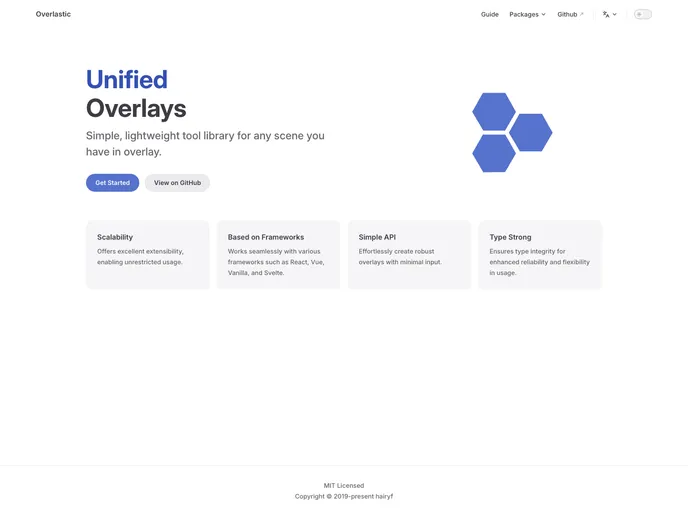Overview
Unified Overlays offers a powerful solution for developers looking to streamline the creation and management of modal components in their applications. By providing a framework that simplifies repetitive tasks and enhances component integration, it addresses common challenges faced in UI development. This tool is particularly useful for those working with frameworks like React, Vue, Svelte, and more, making it a versatile choice for modern web development.
With the growing complexity of UI applications, Unified Overlays stands out by reducing boilerplate code and promoting efficient state management. It allows developers to focus more on building features rather than wrestling with redundancy, thereby enhancing productivity and code maintainability.
Features
- Simplified Creation Process: Streamlines the creation of messages and dialogs, calling your UI as a promise for a smoother experience.
- Integration and Customization: Easily integrates with existing component libraries, allowing customization to fit specific application needs.
- Secure Type Prompts: Provides secure type prompts for each constructor, enhancing type safety and reducing potential errors.
- Component Inheritance: Supports component inheritance for global application contexts, facilitating easier template management.
- Devtools Support: Components created with Unified Overlays support Devtools for frameworks like React and Vue, improving debugging and development efficiency.
- Repetitive Task Reduction: Minimizes redundancy in model class creation by consolidating common fields like cancel, confirm, and visible.
- Flexible Use: Allows the use of imperative or declarative methods, offering developers flexibility in how they implement overlays.
- Metadata Control: Utilize the
useDisclosurehook to gain overlays metadata, streamlining overlay component creation across supported frameworks.




